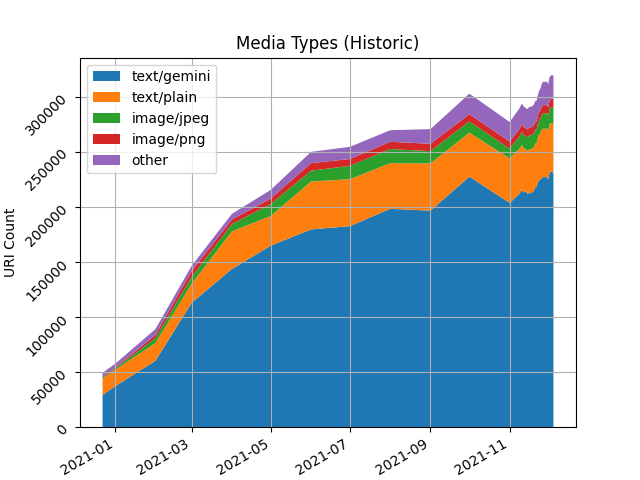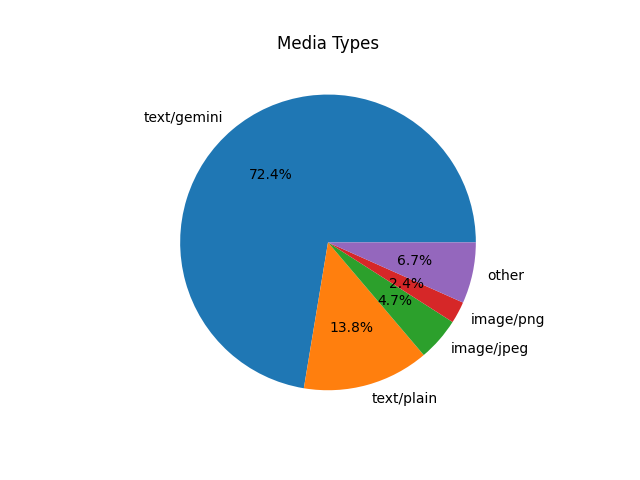


Source of charts (based upon data from Lupa)
THIS weekend we've migrated a bunch of things to GemText, described by Wikipedia as "a special document format [...] that allows linking to other document" (hyperlinks, but without HTML).
"Many GemText pages are in effect just plain text with no additional bits such as active links and headlines/headings."We're about to publish some suppressed information, so the topology does matter. Over the years we've received many threats, both directly and indirectly, and these are easier to defuse when the infrastructure is done right.
As discussed earlier today (internally but publicly), "we need to advocate for a sort of 'homelab' but in the DC sense... so that fewer companies get to control people's data and lives..."
An associate agreed but noted that "however the big money is pushing to make home labs, or anything outside of a big datacentre, discouraged or illegal; see Mozilla's and Chromium's "warnings" about sites, as well as Netcraft's fake attempt at "risk rating"."
They're nowadays doing the same for "apps" (the Linux Foundation is already working on it). So if the "app" isn't signed by the 'babysitter', you cannot run it or you can barely run it. This is the general direction technology has taken, unless we walk away and do it differently.
 "I see various dickheads adopting the term "sideloading" in place of the normal term "installation"," the associate noted.
"I see various dickheads adopting the term "sideloading" in place of the normal term "installation"," the associate noted.
We've already written a great deal about the bad direction/turn the Web has unfortunately taken. It assumes computer users are untrustworthy, even on their very own computers, and Web sites are only "trusted" if the US government says so.
Gemini does not work that way -- not even remotely -- so it deserves wider adoption. There are many practical benefits in this age of fake security, where by "security" they typically mean US "National Security" with back doors. ⬆